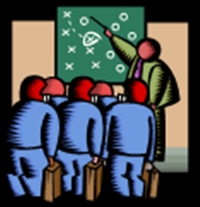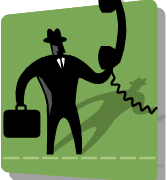Is This the Year to Fix Your Sales & Customer Service Problems?
By Rob Hupp
[dropcaps type=”circle” color=”” background=””]I[/dropcaps]t is another new year and company presidents and business owners are busy rolling out their plans and strategies. If you own or lead a business (or part of a business), answer the following questions about your operation:
[ws_table id=”21″]
Self Score: Your answers as indicated:
- For Question 1-5, 7 and 10, each ‘yes’ is worth 1 point.
- For Question 6, each ‘no’ is worth 1 point.
- For Questions 8 and 9, each ‘proactive’ is worth 1 point.
- Total your points and award a school style letter grade.

If your score and letter grade are less than stellar, take some momentary comfort in the fact that you are not alone. Is this the year to expend some concerted effort and initiative working on sales and customer service? If faced with a production problem, an engineering challenge, or financial hurdle, these same presidents/owners are inclined to tackle the problem head-on until a solution (or at least solid plan for the solution) is in place. However in the world of sales and customer service, sometimes a sense of fatalistic resignation sets in and mediocre results beget more mediocre results.
Let’s be clear here. Increasing sales and retaining customers is difficult challenging work. That said, business growth and valuations are largely influenced by a CEO’s ability to grow sales over time. What are the biggest challenges CEOs face in growing sales? First, they must overcome their own widely-held self-limiting beliefs around fixing the problem. Second, they must address the five most common reasons they and their people struggle in this pursuit.
Reason #1 – Buyers have a system, sales people usually don’t.
Buyers have an effective system to deal with salespeople. The buyer’s system is designed to get as much information as possible and to keep them in control of the situation. This system turns sales people into unpaid consultants, leads them on until the buyer has all of the information he needs, and often results in the buyer using their proposals to negotiate better deals with the current supplier or a competitor.
So how do most sales people deal with the buyer’s system?
 Most play right in to it. Many don’t use a systematic approach to selling and find themselves ‘winging it.’ They allow the prospect to take total control of the sales process. They eagerly:
Most play right in to it. Many don’t use a systematic approach to selling and find themselves ‘winging it.’ They allow the prospect to take total control of the sales process. They eagerly:
- Give their information
- Make commitments without getting any in return
- Waste resources on pursuing deals that will never close
- Make unneeded concessions
- Misinterpret the ubiquitous “I’ll think it over and get back to you” as a future sale
- Lose deals to competitors with strong sales people
The Solution?
A non-traditional approach to selling that provides a system that everyone 100% buys in to. The system should balance both the buyer’s and seller’s interests.
Reason #2 – Spending too much time with prospects who will never buy.
A sales manager recently evaluated two of her reps like this:
“Gary spends too much time with non-buyers, and gets too involved in non-productive activities. One root cause of this behavior is that he doesn’t ask the tough questions.”
“Amy is strong with users, but both she and Gary have lost deals because our competition has contact and influence at the CEO and Executive Director level, and they do not.”
Why is this true?
First, sales reps won’t ask the hard questions up-front for fear of making their prospects angry. Second, prospects don’t like to say no. They go to great lengths to avoid a direct ‘no.’ Third, sales people don’t get to real decision-makers. Instead most salespeople spend time with “comfort people” who are easier to get in front of, and with whom the salesperson is more comfortable talking.
Fact: 60% of a salesperson’s time is spent in front of people who will not or can not buy their product or service.
The Solution?
Sales reps need the tools to separate tire-kickers from buyers and an approach to obtain executive access and sponsorship early in the sales cycle. Learn to qualify your prospects out, not qualify them in. The top producers learn to ask the hard questions up-front, to save resources for real opportunities, and realize “NO” is an acceptable response from a buyer. “Going for the NO” requires a tremendous paradigm shift for most sales people, but it can take all the pressure off the rep and increase his productivity. The prospect is also a beneficiary, because it makes the process feel more like buying than being sold.
Reason #3 – Product training is over-emphasized, product knowledge misused, and selling becomes presenting.
Most training for sales personnel focuses on product knowledge. In fact, 80% of training provided for direct sales people and channel partners is product-oriented. Sales people, once filled with product features and benefits, are eager to share this information. The focus then becomes totally on the product or service, and not on the buyer and his problem, where it belongs.
The Solution?
Provide a systematic approach to selling so salespeople can lead the sales process, help buyers clearly define their problems, and co-build solutions that exactly fit their needs. Product knowledge is important, but how it’s used at each phase of the buying process is key.
Reason #4 – Lack of sufficient prospecting.
 All professional salespeople will eventually be faced with a bout of call reluctance. You know the story – they have so much paperwork on their desk they can’t possibly find the time to prospect for new business or they’re so busy calling on existing customers (who incidentally aren’t buying anything) there’s no way they could add any new appointments. Sound familiar?
All professional salespeople will eventually be faced with a bout of call reluctance. You know the story – they have so much paperwork on their desk they can’t possibly find the time to prospect for new business or they’re so busy calling on existing customers (who incidentally aren’t buying anything) there’s no way they could add any new appointments. Sound familiar?
The Solution?
A fresh approach to prospecting using tools and techniques to fill the pipeline with quality opportunities. Greater effectiveness and success leads to even more success. Nothing motivates professional salespeople like winning.
Reason #5 – Salespeople – and the leaders they work for – don’t treat sales as a profession.
Professionals like doctors, lawyers, engineers, consultants, educators, and CPA’s all have one thing in common – they went to school to learn what they needed to start their careers and they attend continuing education to maintain and increase their proficiency. Salespeople often lack formal education in selling skills and ongoing continuing education. How many salespeople are continually seeking new ways to increase their skills? How many have the attitude, “I’ve been selling for years, what more can I learn?”
This is a problem sales people can’t remedy on their own. Management must be supportive of investing the time and resources needed for salespeople to acquire, develop and retain critical selling skills.
The Solution?
Like top professional performers in any field, the top 20% of salespeople (and the business leaders they work for) look for ways to sharpen their skills to gain the fine edge that leads to consistent positive results.
By applying proven solutions to these common problems, it is possible to change how one sells and services and thereby achieve more consistent business results. This is not a quick-fix. It requires a level of commitment, investment and guidance to implement successfully. Is this your year to address your sales and customer service challenges?
Final Thoughts
According to Dana Borowka, CEO of Lighthouse Consulting Services, LLC (www.lighthouseconsulting.com), hiring the right people is key to future growth. If you would like additional  information on raising the hiring bar, please click here to see an article on this subject.
information on raising the hiring bar, please click here to see an article on this subject.
Permission is needed from Lighthouse Consulting Services, LLC to reproduce any portion provided in this article. © 2014
Rob Hupp is President of Roth|Hupp Growth Partners, Inc., a business development consulting firm specializing in helping organizations and individuals increase their revenues through more effective sales and management practices. Rob can be reached at 310.890.3704 or via e-mail at rhupp@rhgp.com.
If you would like additional information on this topic or others, please contact your Human Resources department or Lighthouse Consulting Services LLC, 3130 Wilshire Blvd., Suite 550, Santa Monica, CA 90403, (310) 453-6556, dana@lighthouseconsulting.com & our website: www.lighthouseconsulting.com.
Lighthouse Consulting Services, LLC provides a variety of services, including in-depth work style assessments for new hires & staff development, team building, interpersonal & communication training, career guidance & transition, conflict management, 360s, workshops, and executive & employee coaching. Other areas of expertise: Executive on boarding for success, leadership training for the 21st century, exploring global options for expanding your business, sales and customer service training and operational productivity improvement.
To order the books, “Cracking the Personality Code” and “Cracking the Business Code” please go to www.lighthouseconsulting.com.




